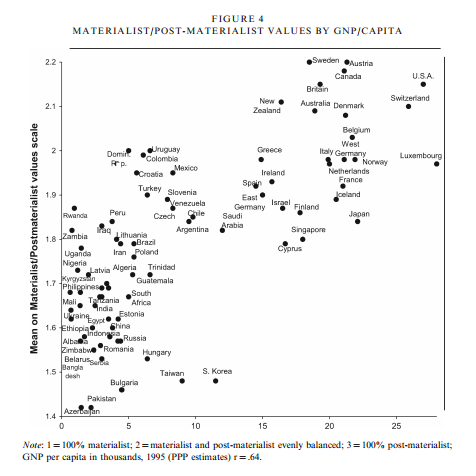I mentioned a few months back that I was working on my capstone project for my degree this semester. I’ve mostly finished it up (just adjusting some formatting), so I thought it would be a good moment to post on my project and some of my findings. Since I have to present this all in a week or two, it’s a good moment to gather my thoughts as well.
Background:
The American Time Use Survey is a national survey carried out by the Bureau of Labor Statistics that surveys Americans about how they spend their time. From 2014-2016 they administered a survey module that asked specifically about health status and behaviors. They make the questionnaire and data files publicly available here.
What interested me about this data set is that they asked specifically about food insecurity….i.e. “Which of the following statements best describes the amount of food eaten in your household in the last 30 days – enough food to eat, sometimes not enough to eat, or often not enough to eat?” Based on that data, I was able to compare those who were food secure (those who said “I had enough food to eat”) vs the food insecure (those who said they “sometimes” or “frequently” did not have enough to eat.
This is an interesting comparison to make, because there’s some evidence that in the US these two groups don’t always look like what you’d expect. Previous work has found that people who report they are food insecure actually tend to weigh more than those who are food secure. I broke my research down in to three categories:
- Confirmation of BMI differences
- Comparison of health habits between food secure and food insecure people
- Correlation of specific behaviors with BMI within the food insecure group
Here’s what I found:
Confirmation of BMI differences:
Yes, the paradox is true for this data set. Those who were “sometimes” or “frequently” food insecure were almost 2 BMI points heavier than those who were food secure…around 10-15 pounds for most height ranges. Level of food insecurity didn’t seem to matter, and the effect persisted even after controlling for public assistance and income.
Interestingly, my professor asked me if the BMI difference was due more to food insecure people being shorter (indicating a possible nutritional deficiency) or from being heavier, and it turns out it’s both. The food insecure group was about an inch shorter and 8 lbs heavier than the food secure group.
Differences in health behaviors or status:
Given my sample size (over 20,000), most of the questions they asked ended up having statistically significant differences. The ones that seemed to be both practically and statistically significant were:
- Health status People who were food insecure were WAY more likely to say they were in poor health. This isn’t terribly surprising since disability would impact people’s assessment of their health status and ability to work/earn a living.
- Shopping habits While most people from both groups did their grocery shopping at grocery stores, food insecure people were more likely to use other stores like “supercenters” (i.e. Walmart or Target) and convenience stores or “other” types of stores. Food secure people were more likely to use places like Costco or Sam’s Club. Unsurprisingly, people who were food insecure were much more likely to say they selected their stores based on the prices. My brother had asked specifically up front if “food deserts” were an issue, so I did note that the two groups answered “location” was a factor in their shopping at equal rates.
- Soda consumption Food insecure people were much more likely to have drank soda in the last 7 days (50% vs 38%) and much less likely to say it was a diet soda (40% vs 21.5%) than the food secure group.
- Exercise Food insecure people were much less likely to have exercised in the last 7 days (50.5%) than food secure people were (63.9%). Given the health status ranking, this doesn’t seem surprising.
- Food shopping/preparation Food insecure people were much more likely to be the primary food shopper and preparer. This makes sense when you consider that food insecurity is a self reported metric. If you’re the one looking at the bills, you’re probably more likely to feel insecure than if you’re not. Other researchers have noted that many food stamp recipients will also cut their own intake to make sure their children have enough food.
Yes, I have confidence intervals for all of these, but I’m sparing you.
BMI correlation within the food insecure group:
Taking just the group that said they were food insecure, I then took a look at which factors were most associated with higher BMIs. These were:
- Time spent eating Interestingly, increased time spent eating was actually associated with lower BMIs. This may indicate that people who can plan regular meal times might be healthier than those eating while doing other things (the survey asked about both).
- Drinking beverages other than water Those who regularly drank beverages other than water were heavier than those who didn’t
- Lack of exercise No shock here
- Poor health The worse the self assessed health, the higher the BMI. It’s hard to tease out the correlation/causation here. Are people in bad health due to an obesity related illness (like diabetes) or are they obese because they have an issue that makes it hard for them to move (like a back injury)? Regardless, this correlation was QUITE strong: people in “excellent” health had BMIs almost 5 points lower than those in “poor” health.
- Being the primary shopper I’m not clear on why this association exists, but primary shoppers were 2 BMI points heavier than those that shared shopping duties.
- Public assistance Those who were food insecure AND received public assistance were heavier than those who were just food insecure.
It should be noted that I did nothing to establish causality here, everything reported is just an association. Additionally, it’s interesting to note a few things that didn’t show up here: fast food consumption, shopping locations and snacking all didn’t make much of a difference.
While none of this is definitive, I thought it was an interesting exploration in to the topic. I have like 30 pages of this stuff, so I can definitely clarify anything I didn’t go in to. Now to put my presentation together and be done with this!




